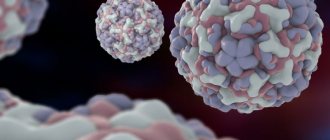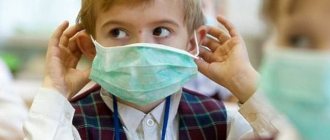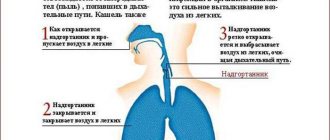Chickenpox or varicella is a common disease caused by the Varicella-Zoster virus, mainly affecting children, but can also occur in adults. During illness, a high temperature rises, the patient shudders, a bright rash appears on the body, and the areas of the rash are very itchy. During chickenpox, bed rest, drinking plenty of fluids, and using various ointments as prescribed by a doctor are recommended. During this period, many are interested in the question: is it possible to wash with chickenpox?
Modern medicine gives a positive answer, although until recently doctors categorically prohibited contact with water for patients with chickenpox. This was due to the belief that exposure to water stops the healing process of ulcers and, on the contrary, leads to even greater inflammation. Modern research has refuted these opinions. Scientists have found that clean water cannot harm recovery. Doctors allow you to swim, but not thoughtlessly, but following certain rules.
Rules of hygiene procedures for chickenpox
Recently, new medical findings regarding the interaction of rashes with water have made life easier for patients with chickenpox. They can now practice good hygiene as usual.
However, parents have a logical question: is it possible to bathe a child with chickenpox? You can, following the rules:
- Maintaining temperature conditions. The water is made comfortable, its temperature is equal to body temperature: +36–38 degrees. The bathroom should not be too hot or dry; it is better to maintain room temperature.
- Refusal of soap, various types of shampoos and shower gels. Wash with regular warm water.
- Adding a concentrated herbal infusion to the water. Oak bark or chamomile petals are suitable for its preparation. Decoctions help reduce inflammation and soothe the skin. In the absence of herbal infusions, add several granules of potassium permanganate to the water.
- Avoid using washcloths or sponges, which can damage inflamed skin. The water pressure is made weak.
- Carrying out the bathing procedure in a short time, no more than 5 minutes. It is not recommended to stay in the bathroom for a long time; just wash off the dirt.
- Refusal to wipe with a terry towel. It is better to replace it with a clean sheet that you can blot your skin with.
- Treat the rash with any of the recommended ointments or solutions.
Read: What characteristic signs can be used to distinguish chickenpox from allergies and other diseases similar to chickenpox
? You need to keep in mind that you can wash with chickenpox only during a non-acute period, which usually lasts no more than three days. Doctors advise to be patient so as not to cause unnecessary complications for the body, especially for a small child.
Washing head
If you have chickenpox, it is better to wash your hair in extreme cases, but if this procedure cannot be avoided, then you should also follow the recommendations:
- The hair is washed separately from the body.
- The water is prepared warm: about +36 degrees.
- Do not use shampoo or soap; it is best to rinse your hair with a decoction of herbs: chamomile, nettle or calendula.
- Wash your hair carefully, trying not to damage the chickenpox.
- After washing, the hair is gently blotted with a soft towel and, if there is a rash on the scalp, it is treated with a product prescribed by the doctor.
When can you wash yourself if you have chickenpox?
If there is a persistent increase in body temperature, the appearance of purulent ulcers and other complications, swimming is prohibited. It is necessary to wait until the end of the acute period, when the patient’s condition has stabilized.
In adults with severe illness, you can wash only after chickenpox when the last rash disappears. To cleanse the skin, alcohol rubs are used, which also have a drying effect.
If the child is feeling well, it is allowed to bathe him from the first days of illness, subject to the following rules::
- Without using washcloths or other traumatic objects.
- Without the use of detergents and scrubs.
- Without vigorous drying with a towel.
The ideal option is to wash in the shower without cleansers several times a day. Such light rinsing gets rid of sweat and dirt, reduces the likelihood of a purulent infection and reduces itching. If the shower is not enough, it is worth finding out after how many days you can take a bath.
Several recipes for herbal decoctions for baths
Plant decoctions help soothe the skin during bathing and heal pockmarks:
- Chamomile decoction. Chamomile is a storehouse of natural healing substances. It contains essential oil, glycerin, flavonoids. Brew two tablespoons in a liter of boiled water, leave for about an hour, then filter and mix with prepared bathing water.
- Calendula decoction. The flowers of this plant contain several types of carotenoids and flavonoids, which have a sedative effect. Brew calendula in the same way as chamomile.
- Oak bark has a healing effect on areas of the skin affected by chickenpox. During the life of a century-old tree, its bark has accumulated a lot of useful substances that help fight ulcers and wounds from chicken pox. These are carotene, sugars, pectins, gallic and ellagic acids. Oak bark is brewed in the usual way, but infused longer than chamomile and calendula flowers.
It is recommended to mix the decoctions in equal proportions.
Rules for bathing during treatment
You can wash yourself if you have chickenpox, but you must follow certain rules. Experienced infectious disease specialists give the following recommendations to sick people:
- wash only under cool water;
- shower or bathe your baby up to 6 times a day;
- try to minimize the time spent on water procedures;
- do not rub the skin with a washcloth or sponge, so as not to tear off the crusts that have formed on the bursting papules
; - do not wipe your body after bathing: try to gently blot the skin with a soft diaper or towel;
- Every time after bathing, treat pockmarks with brilliant green or drying alcohol tinctures of medicinal herbs, wash thoroughly and iron the towel.
In addition, doctors recommend that adults do not wash themselves if they have chickenpox and do not wash children with shower gels or soap. It has been proven that hygiene products increase skin irritation and itching during illness.
Compliance with general hygiene rules
General hygiene, one way or another, is connected with water, so you should be careful when performing hygiene procedures, but in no case abandon them. It is necessary to regularly wash your hands with disinfecting soap or gel, and pay special attention to the cleanliness of your nails, as spreaders of infectious diseases can be hidden under them. Doctors advise constantly maintaining a comfortable, cool microclimate in the room to prevent sweat from getting into the wounds, which will interfere with their healing.
Read: When can you go to kindergarten after chickenpox?
It will not be superfluous to constantly replace linen and home clothes; it is better to use cotton fabrics. After each visit to the bathroom, it is necessary to treat rashes with antiseptic agents. Doctors advise drinking more warm liquids: tea, herbal decoctions, compotes and fruit drinks.
Contraindications to water procedures
There are a number of contraindications in which patients with chickenpox are not recommended to take a shower or bath:
- The patient continues to have a high body temperature or has chills and severe weakness.
- The patient has a weakened immune system or has cardiovascular or kidney problems. In this case, you can take a shower on the 6-7th day of illness for 2-3 minutes.
- Secondary infections are associated with chickenpox.
In this case, water procedures should be replaced by treating the skin with special medicinal foams, herbal decoctions or wiping with wet wipes.
Chickenpox is a long-term infectious disease. During chickenpox, it is extremely important to maintain good personal hygiene. During the acute period of the disease, during which severe hyperthermia is noted, washing is not recommended. You can take a shower 3-5 days after the first symptoms of illness appear. Keeping your skin clean will reduce the symptoms of the disease and speed up recovery.
Video - How to treat chickenpox
As you know, with chickenpox, hygiene procedures should be kept to a minimum. In fact, there are two points of view on this issue. Proponents of the opposite point of view are inclined to believe that proper hygiene during chickenpox is an important element of therapy. Is it possible to wash your hair if you have chickenpox? We will look into this issue in this article.
How to wash off brilliant green and other staining ointments?
When the question of whether it is possible to wash a child with chickenpox is answered positively, you can think about how to wash the skin of a child or an adult from brilliant green or other staining agents after the end of the illness. Several means are used:
- washing with soap and a washcloth;
- rubbing with fresh lemon slices;
- wiping with cleansing tonics and a weak solution of acetone (recommended only for adults);
- use of hydrogen peroxide 30%.
The latest disease research gives kids and adults a chance to lead normal lives even with infectious diseases. A positive answer to the question of whether it is possible to swim with chickenpox makes it possible to keep your skin and hair clean.
In order for water to become a benefit and not an obstacle to recovery, you must follow a few simple rules for conducting water procedures and adhere to general hygiene requirements. In this case, the disease will pass without causing significant harm to the human body.
Personal hygiene rules for chickenpox
How many people get chickenpox on average? An infected patient is not dangerous to others during the first 7–10 days of the disease, during the incubation period. The disease is not yet accompanied by its characteristic rash, but patients experience decreased appetite, sleep disturbances, and weakness. The incubation period lasts from 7 to 11 days. First of all, the rash appears on the scalp, then on the neck, chest and other parts of the body. An infected person is not hospitalized if he feels well. If a child gets sick, parents ask many questions at once: is it possible to walk with the child, how to help relieve the itching, and is it possible for a child to swim if he has chickenpox?
During this period, it is important to observe all necessary hygienic measures in order not only to alleviate the patient’s physical condition, but also to prevent the likelihood of secondary complications of chickenpox. Here are some recommendations:
- During illness, the patient is recommended to wear cotton underwear;
- patients should wash themselves daily;
- It is recommended to adhere to a diet that includes vegetables and fruits, fermented milk products and cereals; you should refrain from fried, salted and smoked foods;
- You should follow an enhanced drinking regime, including still mineral water, tea without sugar and juices, you must refrain from strong drinks and coffee;
- in the acute course of the disease, it is recommended to observe strict bed rest, the air temperature in the room should be comfortable for the child;
- the resulting blisters should be treated with disinfectants and drying agents: for adults - tincture of iodine (2%) and aniline dye solution (2%), for children with ordinary brilliant green.
When can you swim after illness?
As we found out, there is a serious risk of complicating the course of the disease when swimming, and we also found out how to avoid this. When can you swim after chickenpox? You can wash thoroughly only after the rash is completely covered with characteristic crusts, since these crusts are a natural defense against bacteria getting into the wounds. Please note that you cannot rip off the scabs, so you should leave the sponges and sponges until the scabs fall off on their own, but you can already use shower gels and shampoos.
On what day after chickenpox can you swim? As a rule, 4-6 days after the last blisters appear on the skin, the entire rash becomes covered with a brown crust. Let us add that the body will be weakened for 2-3 weeks after recovery, which means that you should not stay in the bathroom for a long time. And it is also strongly recommended to avoid hypothermia after hygiene procedures, due to the high risks of getting sick with something else.
It is worth noting that swimming in open water sources (river, lake, sea, pool, etc.) is strongly not recommended until the crusts have completely disappeared. On what day after chickenpox can you swim in natural bodies of water? As a rule, the crusts themselves fall off 2-3 weeks after their appearance, leaving characteristic red-pink spots, which also disappear over time. If the crusts have fallen off, you can safely dive into the lake.
When is swimming prohibited?
Today, swimming with chickenpox is allowed. But in some cases, the doctor will advise you to avoid water procedures. Let's consider the options when it is better to refuse swimming:
- High body heat is one of the most important symptoms at the time of acute manifestation of the disease;
- The presence of purulent inflammations, open wounds, because moisture can freely seep through them.
Is it possible to swim in open ponds if you have chickenpox?
Hygiene in everyday life during chickenpox is mandatory, but what about in a situation where you are vacationing at the sea or on lakes? You can stay on the beach, but you need to protect yourself from the sun's rays and wear a T-shirt.
It is not recommended to bathe children in open water; there are important reasons for this:
- Pathogenic organisms can enter wounds;
- The disease is dangerous for the people around you, because not everyone has had chickenpox;
- If you do not protect your skin from the sun, then dark spots will soon form instead of marks from the rash, which do not disappear for a very long time.
Therefore, refrain from such a procedure, because 21 days after illness you will be able to go on vacation with your child and buy him in an open body of water.
Swimming is a must!
Chickenpox is a long-term disease; failure to wash a child leads to further development of bacteria. They cause the infection to reappear in the future. The duration of the disease is from ten to fourteen days. Bathing should not be stopped, as it will be uncomfortable for the child to walk around unwashed and unkempt for two weeks. Such baths during chickenpox reduce itching.
After the procedure, it is recommended to dry thoroughly, in other words, you need to take an air bath. Doctors say with confidence that in the absence of fever, bathing children during chickenpox is allowed!
In general, the opinion about when you can swim and whether you should wash at all has changed several times recently. Previously, it was strictly forbidden to wash children during illness; now, on the contrary, it is recommended to wash in order to relieve itching and prevent the development of infection. This is explained by the fact that over time the disease is studied more and things that were not known before become known.











